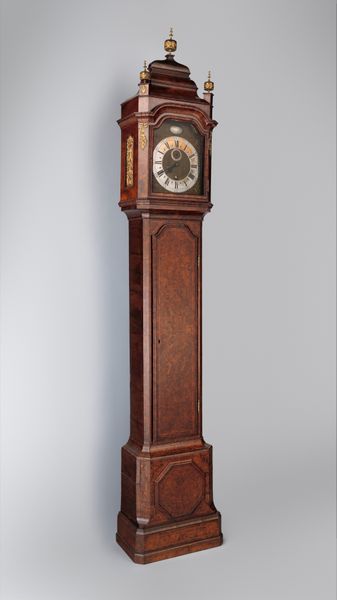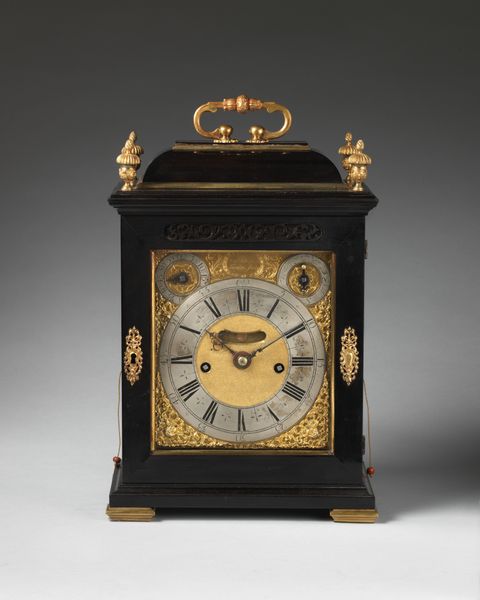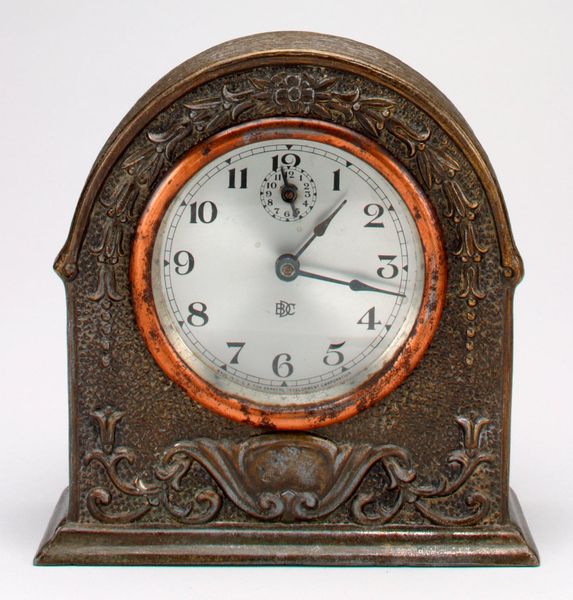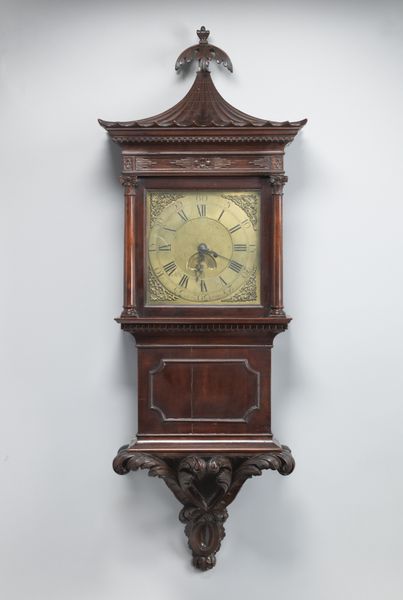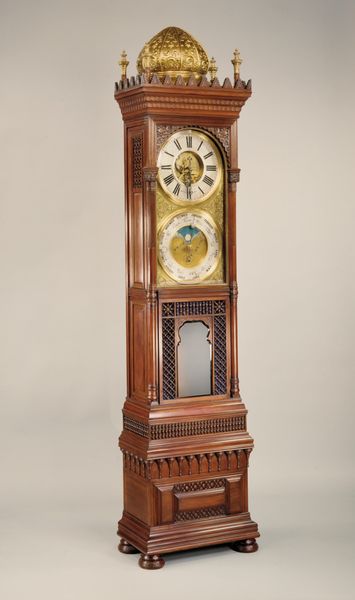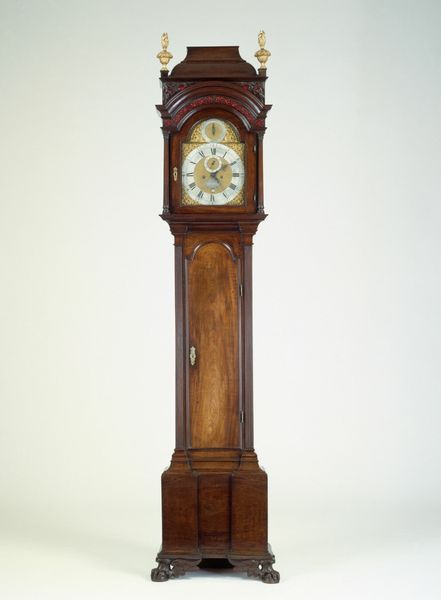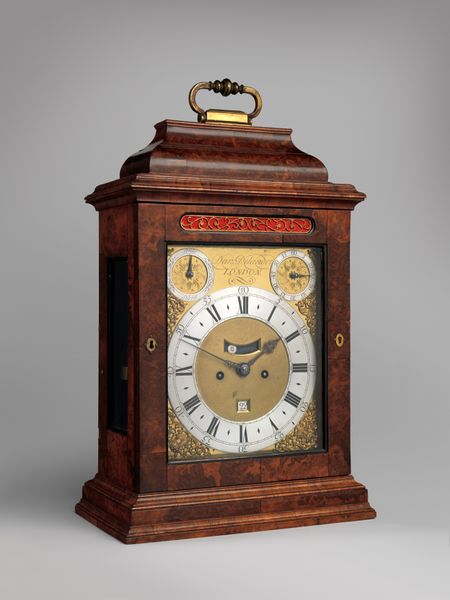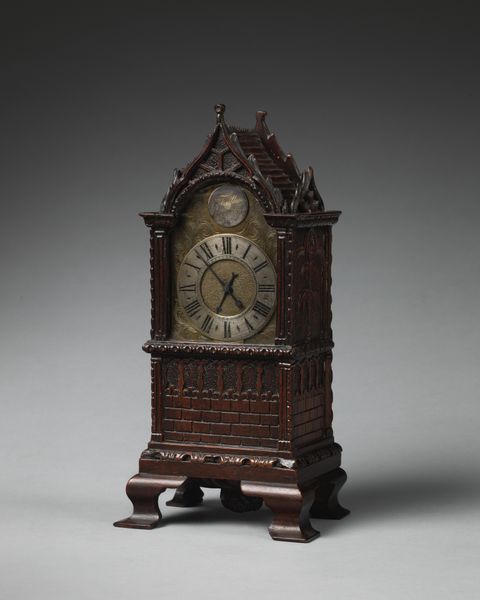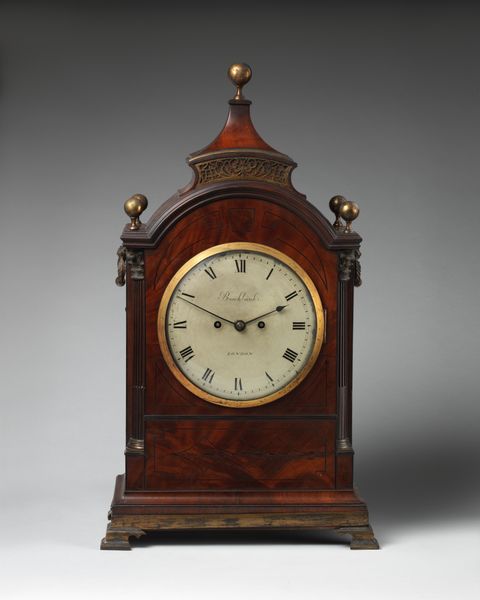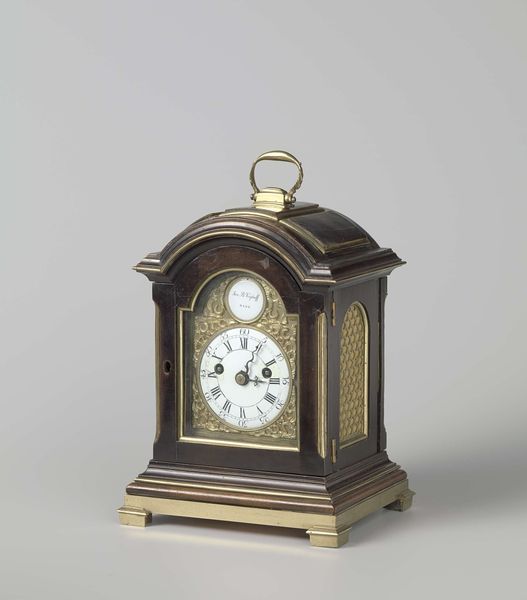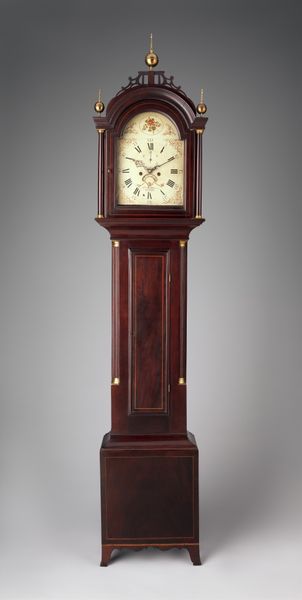
sculpture, wood
#
medieval
#
sculpture
#
sculpture
#
wood
#
decorative-art
Dimensions: Overall: 14 9/16 × 11 11/16 × 6 1/4 in. (37 × 29.7 × 15.9 cm); Overall (dial plate): 8 5/8 × 8 in. (21.9 × 20.3 cm)
Copyright: Public Domain
Curator: Welcome. Today we’re observing a remarkable piece: a table or bracket clock created between 1660 and 1670 by Edward East. Editor: It looks surprisingly austere for its time, almost modern in its simplicity. The black wood casing contrasts sharply with the ornate face. Curator: Indeed. While the decorative arts of the period often leaned toward opulence, the choice of darker wood suggests a conscious decision, perhaps reflective of shifting tastes or the commissioner's preferences. Clocks were powerful symbols of status, dictating the rhythm of daily life within the household. Editor: Absolutely. And consider the craftsmanship: the hand-carved wooden frame, the engraved detailing around the clock face. These skills represent a significant investment of time and expertise. Who was involved in the making? Was this East working solo, or heading a workshop, and how were these skills passed down? Curator: We know Edward East was a prominent figure in the London clockmaking scene. His craftsmanship catered to the elite, playing a crucial role in standardizing timekeeping within societal structures, as precision became more vital in governance and economics. Editor: This isn't just about marking time; it is about owning time, a commodity crafted and consumed within specific power structures. And what does the specific choice of materials – the quality of wood, the specific type of metal for the internal mechanism - tell us about its value within its society? Curator: The clock offered its owners, beyond its immediate utility, entry to a realm where their taste and status might be prominently and precisely put on display. This blending of utility and status, of artistry and scientific innovation, encapsulates much of the 17th century's world view. Editor: Precisely, the clock speaks volumes about how artistry and function intertwine to not only serve everyday needs, but to communicate hierarchies and power structures inherent within its period of manufacture. Curator: Exactly, understanding these pieces allow us to not only view the past, but to reconsider its impact on our modern world. Editor: To really unpack our relationship with temporality, work, and craft.
Comments
No comments
Be the first to comment and join the conversation on the ultimate creative platform.

